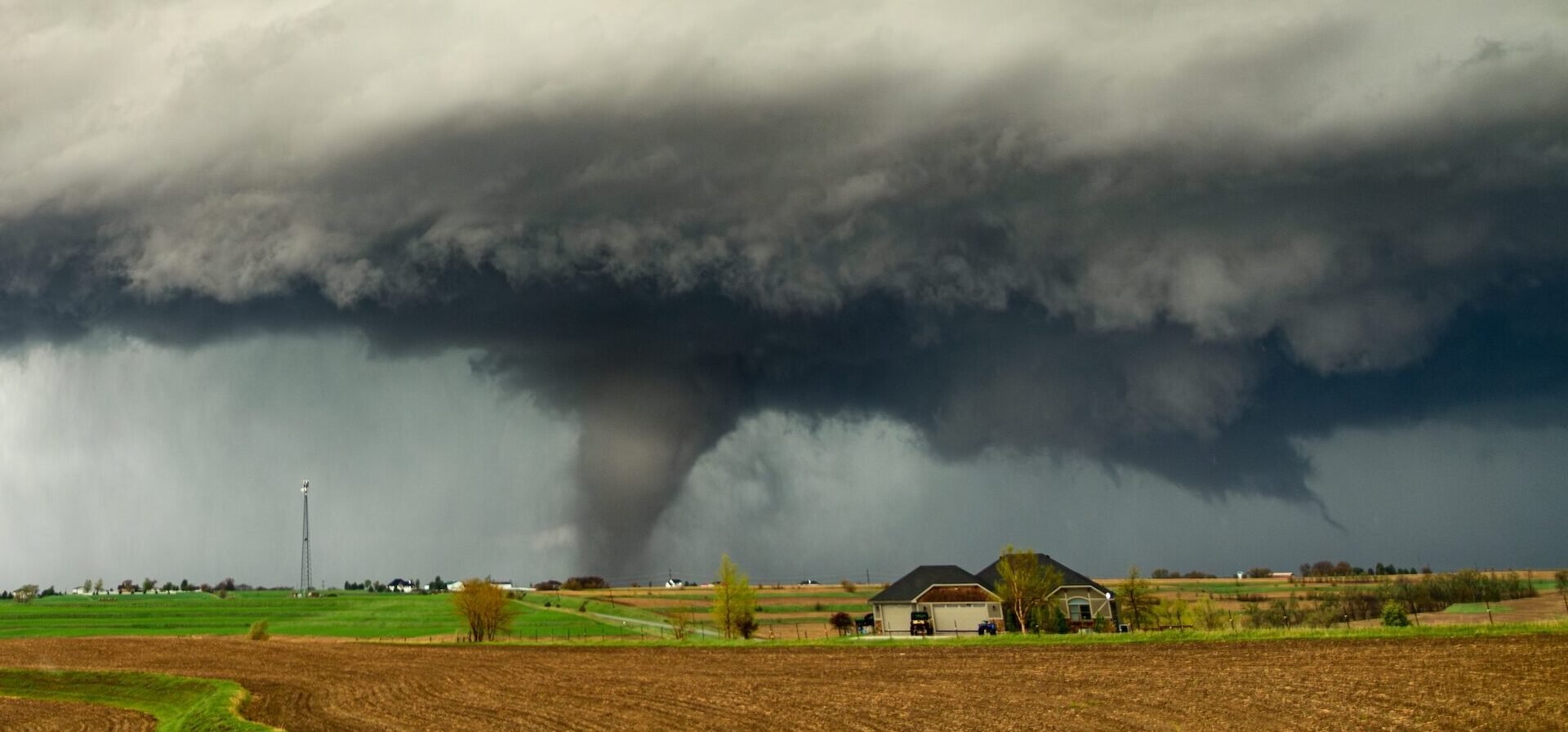How Much Does a Storm Shelter Cost in 2025?
Storm shelter cost can vary widely based on the type, size and installation method you choose. Shelter options are available to match different budgets and safety needs.

Some or all of the mortgage lenders featured on our site are advertising partners of NerdWallet, but this does not influence our evaluations, lender star ratings or the order in which lenders are listed on the page. Our opinions are our own. Here is a list of our partners.
On this page
The average storm shelter cost ranges from about $3,000 to $13,000, depending on the type, size, material and installation method, according to home services website Angi. Less expensive options like a two-person, under-bed tornado shelter can start around $2,100, while large, underground shelters may cost more than $20,000.
Storm shelters — also called tornado shelters or hurricane shelters depending on safety needs where you live — can be located underground or above ground. They may also be prefabricated or custom-built.
This guide breaks down typical storm shelter costs, types and key factors to help you choose the best option for your home, weather situation and budget.
Types of storm shelters
Storm shelter configurations and materials vary depending on factors like available space, type of weather threat and even local building codes. For example, some areas restrict underground shelters due to soil conditions or high water tables.
Here’s a rundown of the most common types of storm shelters with average costs.
Underground or in-ground storm shelter
- Installed below ground, typically in a backyard, garage or basement.
- Pros: Extremely durable and safe against high winds and flying debris.
- Cons: Could be more likely to flood than other types of shelters.
- Usually concrete, steel, fiberglass or polyethylene.
- Cost: $4,000-$20,000+. Cost depends on the amount of excavation and waterproofing needed.
Above-ground storm shelter
- A free-standing unit bolted into a reinforced concrete slab, often in garages or basements.
- Pros: Simpler to install than underground models, so less expensive. Provides easier access, especially for people with mobility issues. Ideal for flood-prone areas.
- Cons: Takes up space in a home.
- Usually made of reinforced concrete or steel.
- Cost: $2,600-$15,000.
Safe room shelter
- Reinforced rooms or closets that are anchored to a home’s foundation.
- Usually constructed of concrete, steel and wood framing. May be prefabricated.
- Pros: Location is flexible. Can be added to a bathroom, walk-in closet, laundry room, under stairs, in a shed or elsewhere. May double as a secure, locked area during a home invasion.
- Cons: More expensive than other options, especially if structural modifications are needed.
- Cost: $3,000–$10,000+. Depends on the size of the room. Cheaper to install during a home’s construction.
Under-bed shelter
- A large, box-type unit that fits under a bed or other furniture. Anchors to a concrete slab.
- Premade and constructed of steel.
- Pros: Less expensive and easy to install.
- Cons: Can only accommodate one or two people.
- Cost: $2,100-$4,500.
Storm shelter options by budget
Which type of storm shelter makes the most sense for your budget and needs?
| Storm shelter cost level | Shelter type | Ideal for |
|---|---|---|
| Most affordable (Less than $5,000) |
| Households on a tight budget that need a basic safe space for short-term shelter. Best for 2-4 people. |
| Mid-range (above $5,000-$12,000) |
| Households wanting and able to invest in a higher level of comfort. Best for 5-8 people. |
| High-end ($15,000+) |
| Households wanting maximum protection and comfort over an extended period for more people. |
🤓 Nerdy Tip
When buying a storm shelter, check to see if it has been tested against and meets standards set by the Federal Emergency Management Agency (FEMA) and the International Code Council (ICC) — a nonprofit that develops building codes and safety standards. Specifically look for compliance with FEMA P-361 criteria, which FEMA says provides “near-absolute protection” in a tornado or hurricane. Factors that affect storm shelter cost
Several variables can affect your final cost for buying and installing a storm shelter.
- Size and capacity. Larger shelters that accommodate more people naturally cost more.
- Installation site. Above-ground shelters are typically less expensive than underground shelters that require skilled labor for excavation. If you live in an area with rocky or clay soil, that can drive up installation costs.
- Materials and structure. Steel shelters are usually more expensive than concrete or fiberglass, because they last longer. Also, prefabricated shelters are cheaper than custom-built ones.
- Labor and location. Labor costs and code requirements vary by region. Depending on the type of storm shelter, installation can take a few hours or several days. Ask your installer about the timeframe for completion and a breakdown of labor costs. Also inquire about the cost of any necessary permits or inspections.
- Customization and special features. Added features like seating, lighting, heating, air conditioning or reinforced doors add to the cost of a storm shelter. Accessibility features, like ramps, can also increase the total cost.
- Shipping or delivery fees. If you order a prefab shelter, shipping and delivery fees may not be included. Due to the size and weight of these shelters, the cost can be substantial. Ask the seller about these costs upfront.
Tornado shelters vs. hurricane shelters: Are they different?
Tornado and hurricane shelters serve the same purpose — providing protection in extreme weather — but they also have differences.
- Tornado shelters are built to be more rigid, so they can withstand intense pressure changes, brief and violent wind bursts and flying debris. They’re intended for fast access and short-term use, because tornadoes can spin up suddenly and pass quickly. Tornado shelters are usually underground or in a home as an anchored and reinforced area or room.
- Hurricane shelters must protect against sustained high winds, and they’re constructed for longer-term use. FEMA does not recommend whether a residential hurricane shelter be above or below ground, but it does address the need to consider the potential for flooding and storm surge. In flood-prone areas, hurricane shelters are typically above-ground and possibly elevated.
To meet FEMA standards, both tornado and hurricane shelters must be able to sustain winds up to 250 mph. Some shelters are built and rated to be used for both tornadoes and hurricanes .
» MORE: Gutter replacement cost
Can I get storm shelter financing?
Your storm shelter provider may offer financing, but there are other — and maybe better — financing options available.
Home Equity Loan or HELOC
Home equity loans or home equity lines of credit (HELOC) may have lower interest rates than financing through a contractor’s lender, as well as possible tax benefits. Both options use your home as collateral.
Home equity loan. This may be a good option if you just want to pay for the storm shelter and installation but won’t need ongoing access to money for additional home improvements. With a home equity loan, you receive a lump-sum payment and then pay it back at a fixed interest rate over an agreed period of time, typically five to 30 years.
Home equity line of credit. HELOCs work more like a credit card, so you have ongoing access to money as you need it. You usually have 10 years to draw from the line of credit and pay interest only on the HELOC amount you use. Most lenders have an option for interest-only payments during that time, after which you’re required to pay both the principal and interest. HELOC interest rates typically are variable, meaning your monthly payment could rise or fall over time.
Personal Loan
Many banks, credit unions and online lenders offer personal loans, with amounts typically from $1,000 to $100,000 and with fixed annual percentage rates. You receive a lump sum and repay it in equal monthly installments over a set period, typically two to seven years. Unlike with home equity financing, there is no collateral. This means your home isn’t at risk if you get behind on payments, but you’ll still have to pay late fees and late payments can negatively impact your credit. Here are NerdWallet’s picks for the best home improvement loans.
Credit Card
Credit cards may be a good option for storm shelters on the lower end of the cost range. That’s because credit cards typically charge higher interest rates than home equity loans, HELOCs and personal loans. When used responsibly, credit cards can come with great benefits, such as 0% introductory APR periods that allow you to avoid interest for a set number of months; rewards so you earn cash back, travel rewards or points; and sign-up bonuses that give you extra cash back or rewards. If you go this route, you’ll want to make sure you choose one of the best credit cards for home improvements.
Choosing a storm shelter
When comparing storm shelters, consider your safety needs, total cost and return on investment. Here are some additional factors to help achieve the best outcome.
- Look for cost savings. Before purchasing a storm shelter, check with your local emergency management office on the availability of financial assistance. Some states help purchase residential storm shelters through reimbursements, rebates or tax credits.
- Work with reputable storm shelter professionals. Some shelter manufacturers (called producers) don’t install their own shelters, so you may have to hire an installer. To find certified producers and installers, contact the American Tornado Shelter Association or the National Storm Shelter Association.
- Consider quality and long-term investment. Will the shelter you choose last if you stay in your home for many years or increase your home’s value if you sell it?
Ultimately, the right storm shelter is the one that protects you and your loved ones. Even if an underground shelter is out of your price range, you can find storm shelter options that cost less than $5,000 and keep you safe.
Frequently Asked Questions
Do storm shelters add value to a house?
Yes. According to FEMA and the Federal Alliance for Safe Homes, installing a storm shelter or safe room increases a home's selling price by about 3.5%.
What is FEMA’s Hazard Mitigation Assistance grant program?
FEMA distributes funding to eligible states through the Hazard Mitigation Assistance (HMA) program, which may provide funds to assist with residential storm shelter installation. FEMA works through state organizations and does not pay homeowners directly. To check on storm shelter funding and requirements in your state, contact your State Hazard Mitigation Officer .
How big should a storm shelter be?
FEMA recommends that a residential storm shelter have a minimum of five square feet per person for a tornado shelter and 10 square feet for a hurricane shelter. However, if the cost of a larger shelter prevents you from installing one, a cheaper shelter with less space (for example an under-bed shelter) would be a better option.
Can I build a DIY storm shelter?
Unless you’re experienced in constructing storm shelters, it’s better to hire a licensed and certified professional than try to do it yourself. To provide full protection, a storm shelter must meet FEMA, ICC 500 and local building codes, and most homeowners aren’t knowledgeable about how to meet these standards.
Article sources
NerdWallet writers are subject matter authorities who use primary,
trustworthy sources to inform their work, including peer-reviewed
studies, government websites, academic research and interviews with
industry experts. All content is fact-checked for accuracy, timeliness
and relevance. You can learn more about NerdWallet's high
standards for journalism by reading our
editorial guidelines.
- 1. FEMA. Safe Rooms for Tornadoes and Hurricanes, FEMA P-361. Accessed Jul 28, 2025.
More like this
Related articles









